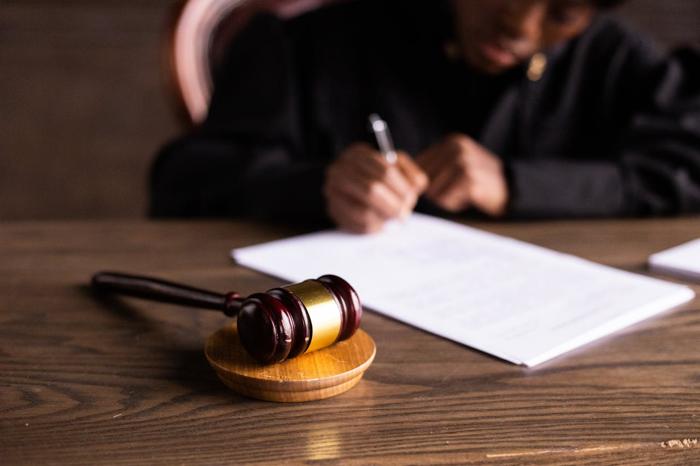A tax lien is a legal claim made by the government against a taxpayer’s assets when they fail to pay their tax obligations. In Canada, this provides the Canada Revenue Agency (CRA) with an avenue for them to secure their interest in a taxpayer’s property, including real estate, personal property, and financial assets. Having a tax lien placed on your property is one of the dangers of outstanding taxes and can have significant consequences for a taxpayer’s financial circumstances and credit standing.
When Can the CRA Register a Tax Lien Against a Taxpayer’s Assets?
Although they can secure a lien on your property by bringing a claim (lawsuit) through the provincial courts, the CRA can also automatically create tax liens when certain conditions are met without the need to go through the regular court process, as other creditors or lien holders would. To impose a tax lien on a taxpayer’s property, the CRA only needs to register a certificate of arrears in Federal Court.
Here are some of the conditions that allow the CRA to obtain a tax lien:
- Significant tax debt. The CRA typically imposes liens when a substantial amount of tax debt is owed for an extended period of time.
- Exhaustion of other collection methods. The CRA will usually try other collection methods first before registering a lien, which they generally use as a last resort.
- Notification to the debtor. After registering the certificate of arrears, the CRA will notify the debtor of their intention to place a lien against their property.
It’s important to note that while the CRA has the power to impose liens, they typically do not immediately seize and sell property, especially if it’s a primary residence. They usually use liens as a way to secure their claim on the property’s value when it’s eventually sold or refinanced. However, the presence of a tax lien can make it difficult for the property owner to sell or refinance the property until the tax debt is addressed.
It’s also vital to know that the CRA can garnish wages and freeze bank accounts.
How do Tax Liens Differ from Other Types of Liens in Canada?
There are several types of liens that can be placed on property. Common liens on property include:
- Mortgage liens. These are voluntary liens placed by lenders when a property owner takes out a mortgage to purchase a home or refinance.
- Mechanic’s liens and construction liens. Leins can be filed by contractors, subcontractors, or suppliers who have not been paid for work or materials provided for property improvements.
- Judgment liens. These involuntary liens result from a court ruling against someone, often due to unpaid debts or lawsuits.
Aside from the CRA’s unique power to obtain an expedited lien, here are a few of the other differences between a tax lien and other liens:
- Priority status. Some tax liens from the CRA may have priority status, meaning there is a possibility that they will take precedence over other types of liens, mortgages or claims on assets. These are typically tax liens based on payroll taxes and GST/HST amounts businesses must remit to the CRA.
- Broader scope. While many liens are attached to specific assets, CRA tax liens can potentially be applied to all of a debtor’s assets, including personal property, business assets, and real estate.
- Impact on credit. While the CRA generally does not report directly to credit bureaus, tax liens can become a matter of public record through court filings, which can then appear on a credit report. This differs from some other types of liens that may be reported directly by creditors to Equifax or TransUnion.
Removing a tax lien typically requires fully paying the tax debt or negotiating a payment arrangement with the CRA. Other liens may have different requirements for removal depending on the creditor and circumstances.

Resolving CRA Tax Liens
The most straightforward way to resolve a tax lien in Canada is to pay the total amount owing and the CRA will remove the lien from your property. Here are a few other options if you’re unable to pay in full or want to clear up your tax debt sooner:
- Negotiate a payment plan. Visit the CRA website or contact the CRA to set up a payment arrangement for your tax debt over time. If you stick to the agreed-upon plan, the CRA may be willing to remove the lien.
- Sell the property. If you sell the property with the lien, the proceeds will first go towards paying off any mortgage, then towards the tax debt. Any remaining funds would go to you.
- File a consumer proposal. This is a formal debt settlement option. Your proposal must include a specific term stating that the CRA will remove the tax lien upon completion of the proposal. Also, the CRA must agree to this arrangement.
- Refinance your property. You may be able to refinance your property to pay off the tax debt, though this can be more difficult with a tax lien in place.
- Seek professional help. Consider working with or getting representation for tax problems from a licensed professional who can negotiate with the CRA on your behalf and help you explore all available options.
It’s important to act quickly when dealing with a tax lien. The sooner you address the issue, the more options you’ll have available. Remember, ignoring the problem will only make it worse, as interest and penalties will continue to accrue on your tax debt. Also, filing for bankruptcy will not remove a tax lien, as it is considered a secured debt.
Once you have satisfied your outstanding tax obligations with the CRA and receive confirmation of such, double-check with the credit-reporting services mentioned above to ensure that the tax lien does not appear in your credit report.
Get advice on tax liens and all other tax issues from the experienced and respected Toronto tax accountants at Faris CPA. We have over a decade of experience helping clients with tax issues in Canada, the United States, and the United Kingdom.




